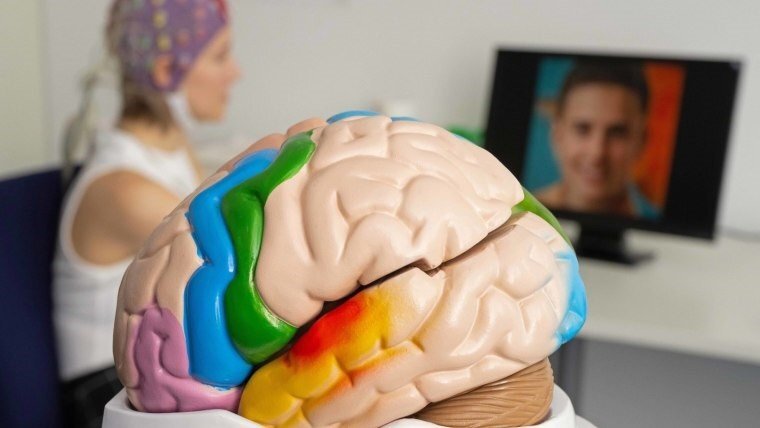In cooperation with the Zhejiang Normal University in Jinhua (China), the following presentations will be held:
Gyula Kovács: Getting to know you: emerging neural representations during face familiarization.
18.02.2021 09:00 (CET; 16:00 Shanghai Time)
Ambrus GG, Kaiser D, Cichy RM, Kovács G. The Neural Dynamics of Familiar Face Recognition. Cereb Cortex. 2019 Dec 17;29(11):4775-4784. doi: 10.1093/cercor/bhz010. PMID: 30753332.
Kovács G. Getting to Know Someone: Familiarity, Person Recognition, and Identification in the Human Brain. J Cogn Neurosci. 2020 Dec;32(12):2205-2225. doi: 10.1162/jocn_a_01627. Epub 2020 Sep 9. PMID: 32902334.
Gyula Kovács: Predictive coding: todays most influential neural model. Evidences, explanations and theoretical implications
25.02.2021 09:00 (CET; 16:00 Shanghai Time)
Kovács G, Grotheer M, Münke L, Kéri S, Nenadić I. Significant repetition probability effects in schizophrenia. Psychiatry Res Neuroimaging. 2019 Aug 30;290:22-29. doi: 10.1016/j.pscychresns.2019.05.006. Epub 2019 May 31. PMID: 31254800.
Trapp, S., Schweinberger, S. R., Hayward, W. G., & Kovács, G. (2018). Integrating predictive frameworks and cognitive models of face perception. Psychonomic bulletin & review, 1-8.
Kovács G, Schweinberger SR. Repetition suppression - An integrative view. Cortex. 2016 Jul;80:1-4. doi: 10.1016/j.cortex.2016.04.022. Epub 2016 May 10. PMID: 27221646.
Grotheer M, Kovács G. Can predictive coding explain repetition suppression? Cortex. 2016 Jul;80:113-24. doi: 10.1016/j.cortex.2015.11.027. Epub 2016 Jan 19. PMID: 26861559.
Géza Gergely Ambrus : Investigating the Role of the Occipital Face Area Using Transcranial Magnetic Stimulation
16.03. 2021, 09:00 (CET; 16:00 Shanghai Time)
Ambrus, G. G., Amado, C., Krohn, L., Kovács, G. (2019) TMS of the occipital face area modulates cross-domain identity priming. Brain Structure and Function. 224(1), 149-157.
Amado, C., Ambrus, G. G., Trapp S., and Kovács, G. "Neuroimaging results suggest the role of prediction in cross-domain priming." Scientific Reports 8, no. 1 (2018): 10356.
Ambrus, G. G., Dotzer, M., Schweinberger, S. R., & Kovács, G. (2017). The occipital face area is causally involved in the formation of identity specific face representations. Brain Structure and Function, 222(9), 4271-4282.
Ambrus, G. G., Windel, F., Burton, A. M., & Kovács, G. (2017). Causal evidence of the involvement of the right occipital face area in face-identity acquisition. NeuroImage, 148, 212–218. http://doi.org/http://dx.doi.org/10.1016/j.neuroimage.2017.01.043
Géza Gergely Ambrus & Alexia Dalski: Multivariate Pattern Analysis Across Experiments: A Way to Uncover General Processing Cascades?
23.03. 2021, 09:00 (CET; 16:00 Shanghai Time)
Sophie-Marie Rostalski: FMRI experiments on response suppression phenomena in the ventral visual stream
08.04.2021 09:00 (CET; 16:00 Shanghai Time)
Grotheer, M., & Kovács, G. (2016). Can predictive coding explain repetition suppression? Cortex, 80, 113–124. https://doi.org/10.1016/j.cortex.2015.11.027
Walsh, K. S., McGovern, D. P., Clark, A., & O’Connell, R. G. (2020). Evaluating the neurophysiological evidence for predictive processing as a model of perception. Annals of the New York Academy of Sciences, 1464(1), 242–268. https://doi.org/10.1111/nyas.14321External link
Rostalski, S.-M., Amado, C., & Kovács, G. (2019). Repetition suppression for noisy and intact faces in the Occipito-temporal cortex. Frontiers in Psychology, 10(JUN). https://doi.org/10.3389/fpsyg.2019.01348External link
Rostalski, S. M., Amado, C., Kovács, G., & Feuerriegel, D. (2020). Measures of repetition suppression in the fusiform face area are inflated by co-occurring effects of statistically learned visual associations. Cortex, 131, 123–136. https://doi.org/10.1016/j.cortex.2020.07.010
Johnston, P., Overell, A., Kaufman, J., Robinson, J., & Young, A. W. (2016). Expectations about person identity modulate the face-sensitive N170. Cortex, 85(2011), 54–64. https://doi.org/10.1016/j.cortex.2016.10.002External link
Chenglin Li: The effect of experience on the perceptual expectation
13.05.2021 09:00 (CET; 16:00 Shanghai Time)
Grotheer, M., & Kovács, G. (2014). Repetition probability effects depend on prior experiences. Journal of Neuroscience, 34(19), 6640-6646.
Chen, Op de Beeck (2021) Perceptual learning with complex objects: A comparison between full-practice training and memory reactivation. eNeuro ()
